The history of the Cathedral of Christ the Savior: the project of the Palace of Soviets and the pool "Moscow
The Cathedral of the Moscow diocese and the entire Russian Orthodox Church - the Cathedral of Christ the Savior is located near the Kropotkinskaya metro station. The territory where it is located is endowed with powerful mystical power: it is not without reason that various religious buildings were built here from time immemorial, and it was here that people flocked in search of protection and help. Previously, this place was called Chertoly, in honor of the Chertory brook flowing at the bottom of the ravine. During the reign of Ivan the Terrible, there was the Alekseevsky convent here, and in the 1830s it was decided to move it to another place.
![]()
The current Cathedral of Christ the Savior is the second one built on this site. The first one was erected in 1883 in honor of the victory over Napoleon; it took more than forty years to build. The builders overcame various difficulties: fires, collapses of the foundation, flooding with groundwater. After the opening, the temple existed for less than fifty years: on December 5, 1931, it was blown up by the Bolsheviks. A part of the external white-stone bas-reliefs, later built into the wall of the Donskoy Monastery, has been preserved.

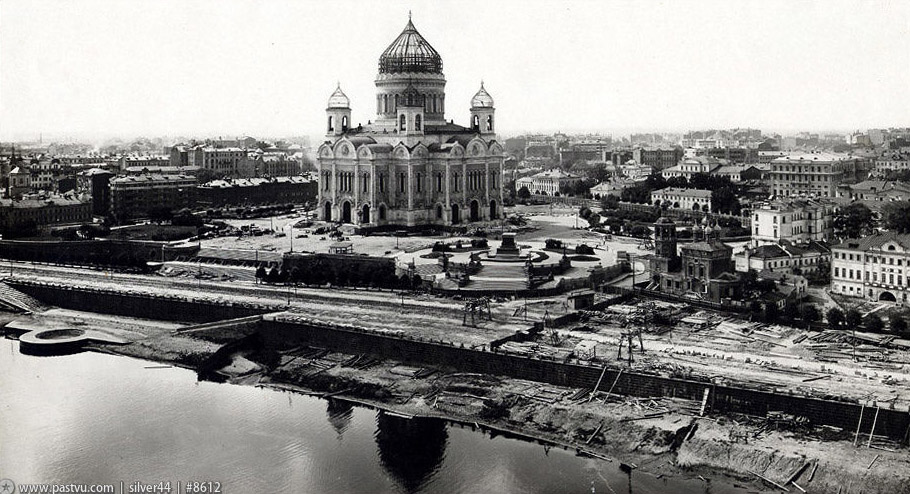
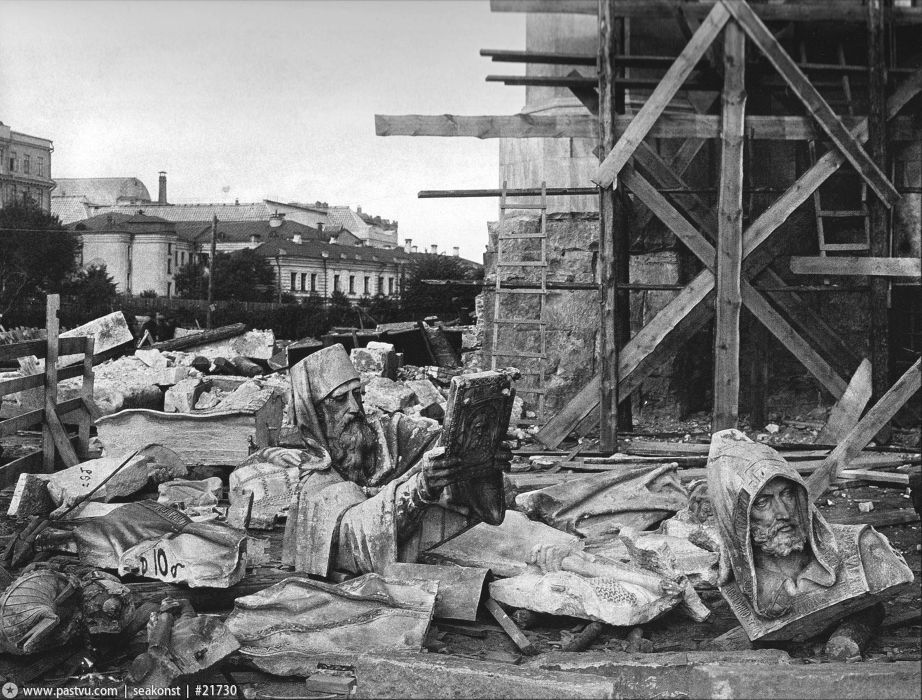

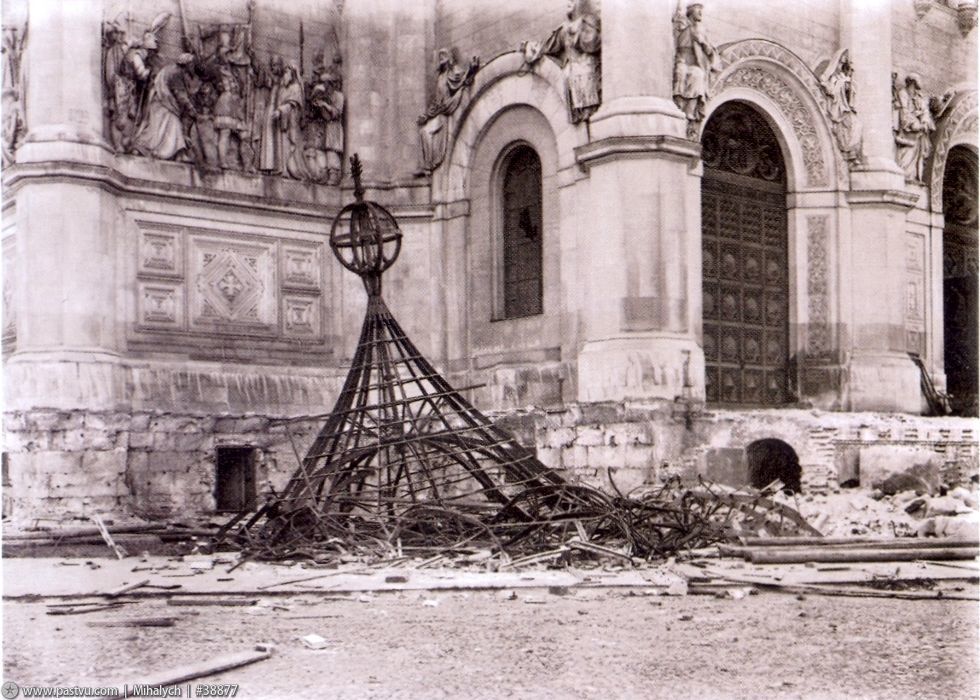


On this site, the authorities decided to build the Moscow Palace of Soviets - one of the most famous unrealized architectural projects in history. The tallest building in the world was to become a symbol of victorious socialism, a symbol of a new country and a new Moscow. It was assumed that the dimensions of the building would exceed 400 meters, and a rotating statue of Lenin would be installed on its roof.

On June 18, 1931, an open competition for the best design of the Palace was announced through the Izvestia newspaper. Competitive works were exhibited in the Pushkin Museum. The project of Boris Iofan won, but with the reservation “To complete the upper part of the Palace of Soviets with a powerful sculpture of Lenin, 50-75 meters in size, so that the Palace of Soviets would look like a pedestal for the figure of Lenin. Instruct Comrade. IOFANU will continue to develop the project of the Palace of the Soviets on the basis of this decision so that the best parts of the projects and other architects are used. Consider it possible to involve other architects in further work on the project.”

Under such a powerful structure, an appropriate foundation was needed. It consisted of two concentric concrete rings with a diameter of 140 and 160 meters. For comparison: the football field has a size of 105 by 70 meters. The height of these rings is 21 meters. If we take into account that the average floor height in a panel house is 3.3 meters, then the height of the rings was about six floors. They were "laid" to a depth of 30 meters. Before pouring concrete, the builders dug a huge pit. So that its walls would not collapse under the influence of subsoil waters, the so-called "bitumization" of the soil was first used in the USSR - 1800 wells were drilled around the pit. A pipe with small holes in the walls was inserted into each of them. Bitumen heated to a temperature of 200 degrees Celsius was pumped into these pipes under high pressure. Through the holes in the pipes, bitumen seeped into the ground, filled all the cracks and cavities and solidified. A waterproof curtain was formed around the pit. Or rather, almost waterproof. But with the water that still seeped into the pit, the pumps successfully coped.
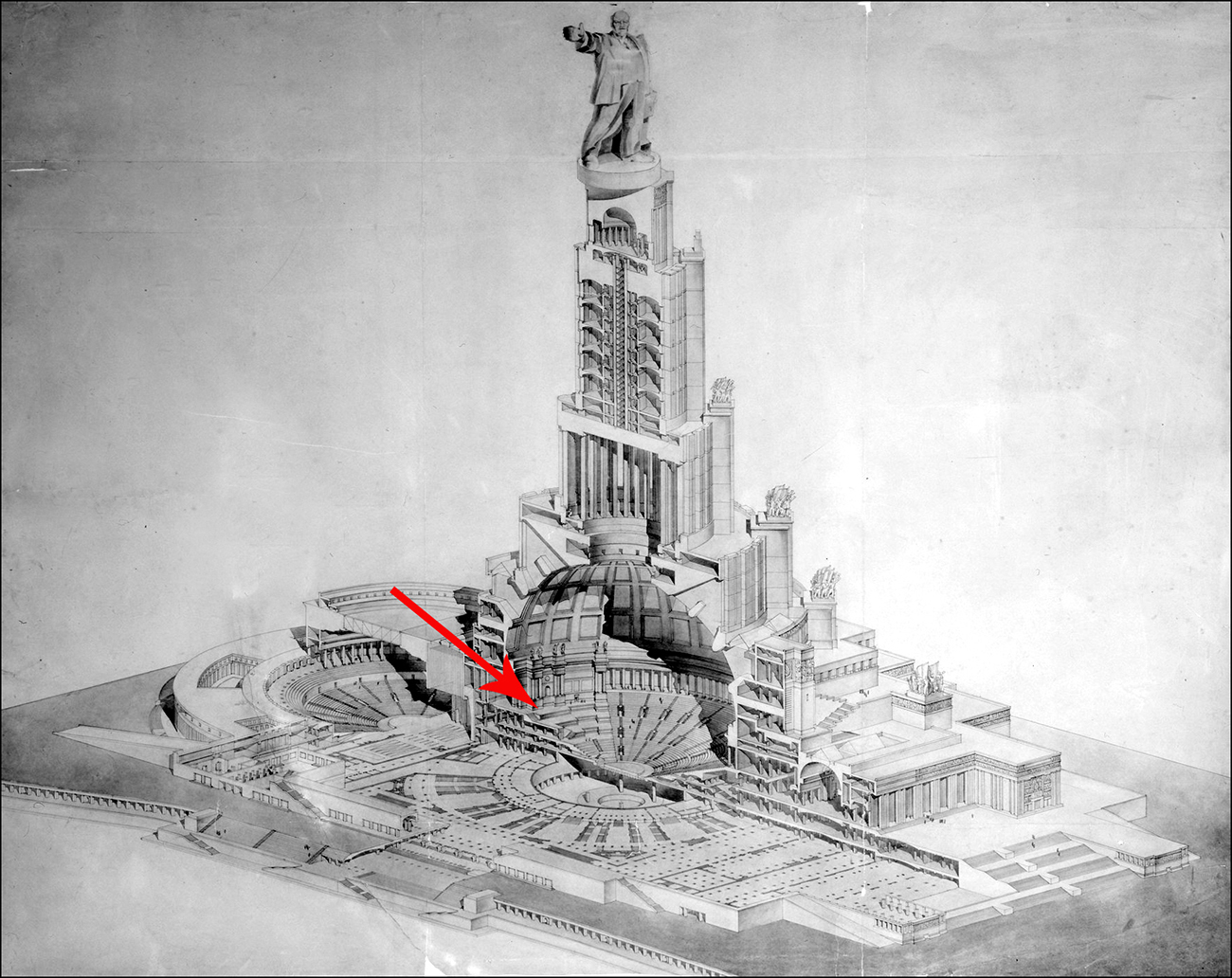
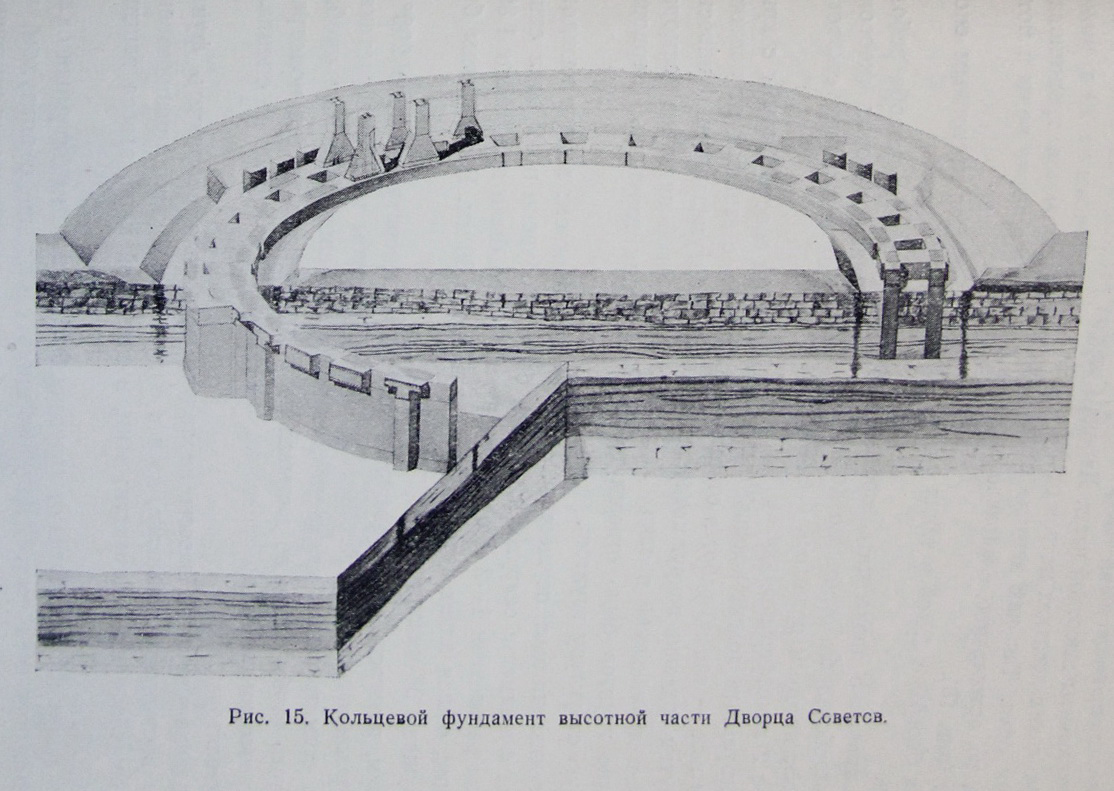
To solve the problem with groundwater, a kind of “bowl” was built under the future foundation from four layers of asbestos cardboard impregnated with bitumen. Now it was time to start laying the foundation. Especially for this purpose, a concrete plant was built near the construction site. To the construction site, concrete was delivered to the pit in metal tubs. 4 tons of concrete were placed in each such tub. With the help of a crane, the tubs were lowered into the pit, the worker knocked out the latch holding the bottom. The foundations of the rest, not so massive, parts of the building were simply concrete pillars with a diameter of 60 meters.
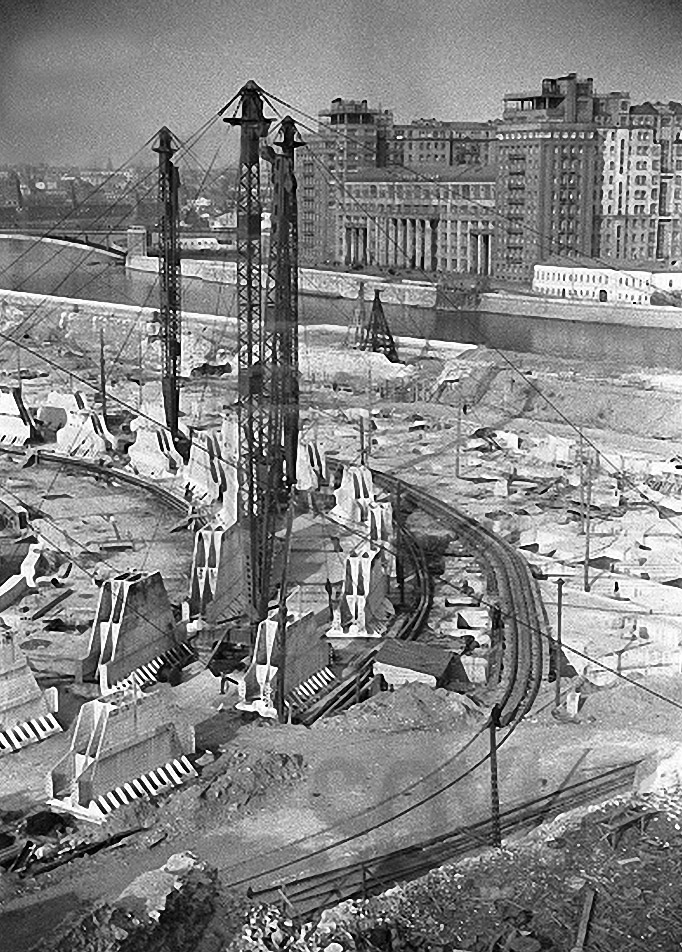
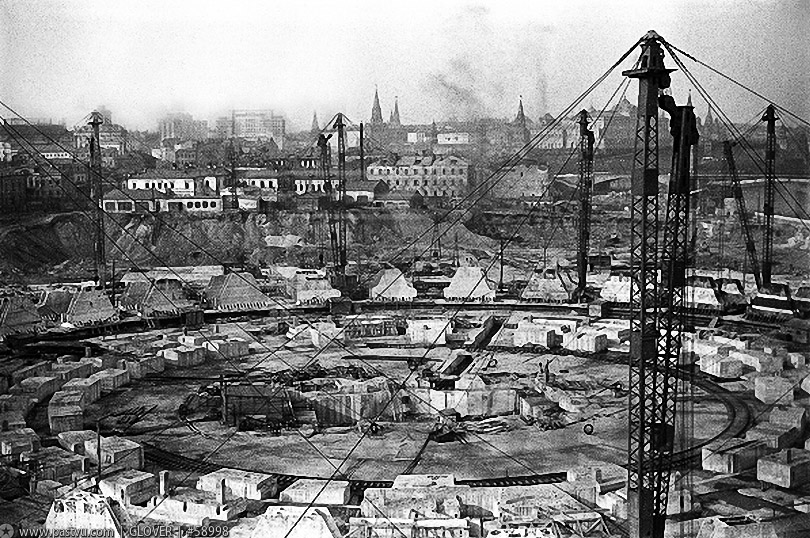
Before the start of the Great Patriotic War, they managed to build the foundation of the high-rise part of the Palace and began to mount the steel frame of the building. But during the Second World War, concrete, granite, steel and rebar were needed to restore the national economy, bridges, factories and other things. After the war, the foundation of the unfinished building was used to build the Moskva outdoor swimming pool (1960‑1994).


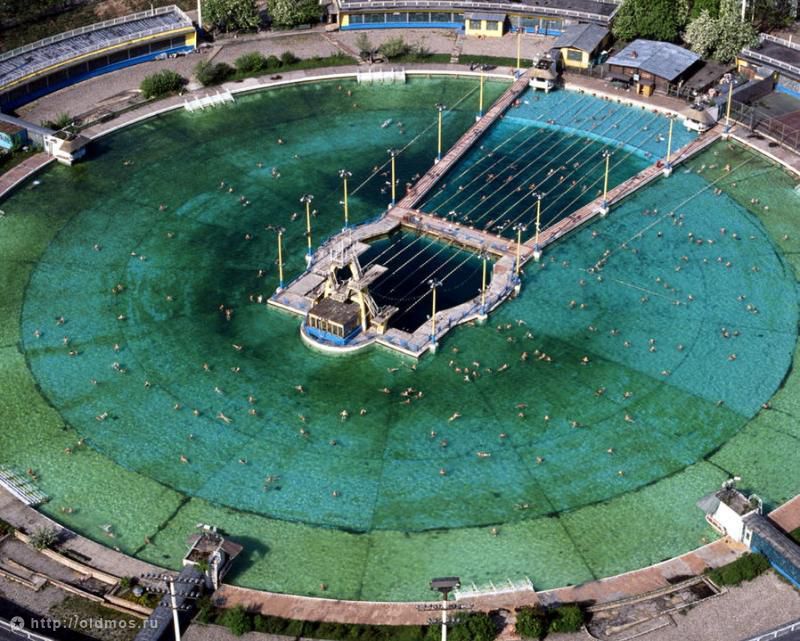


This is what Moscow would look like today if the project of the Palace of Soviets were still implemented:
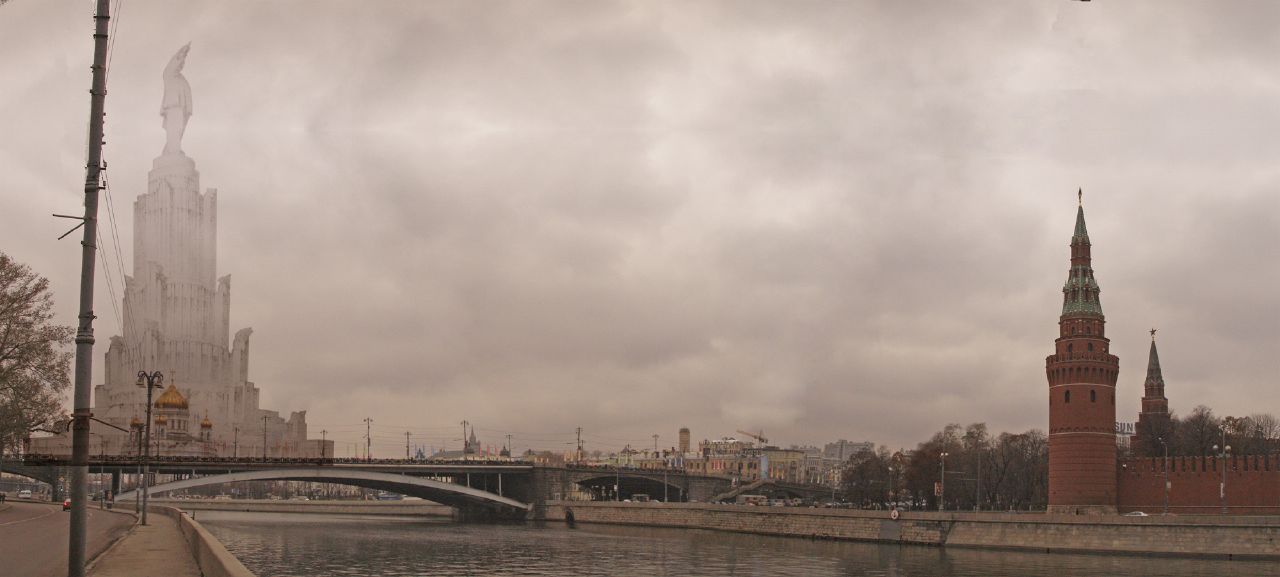

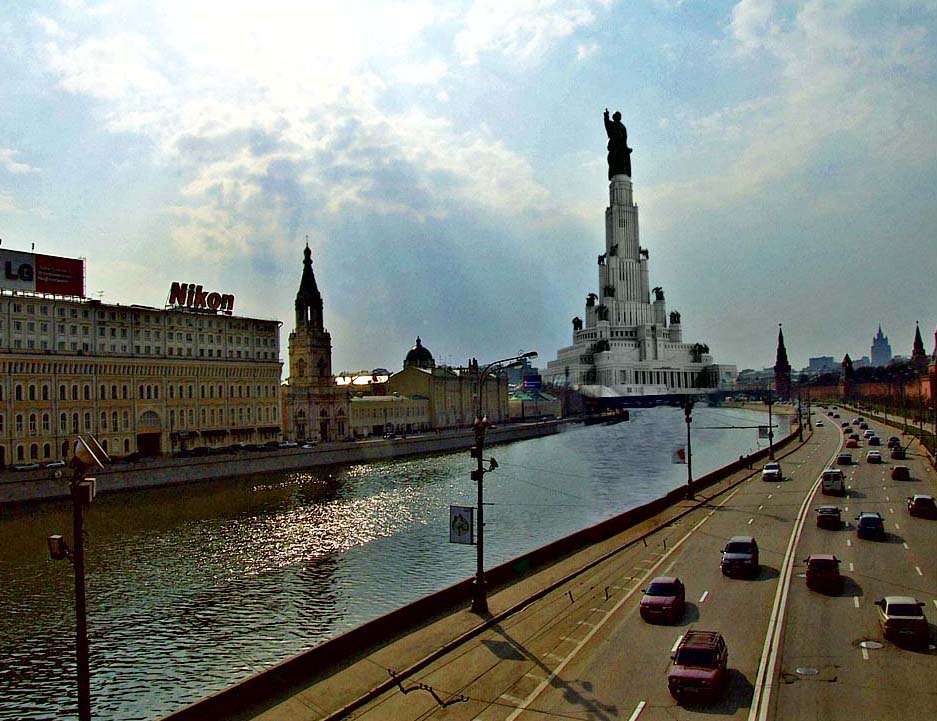
During the years of perestroika, it was decided to restore the Cathedral of Christ the Savior in its original place, exactly corresponding to the original. The pool was dismantled, and construction of a new temple began in the mid-1990s. The beginning of the new millennium was marked by the opening of the restored Cathedral of Christ the Savior, into which miraculous relics were transferred. Many people are convinced that the revival of the holy place became possible only thanks to the intervention of higher powers. And the place where it is located is endowed with powerful mystical power: it is not without reason that various religious buildings were built here from time immemorial, and it was here that people flocked in search of protection and help.


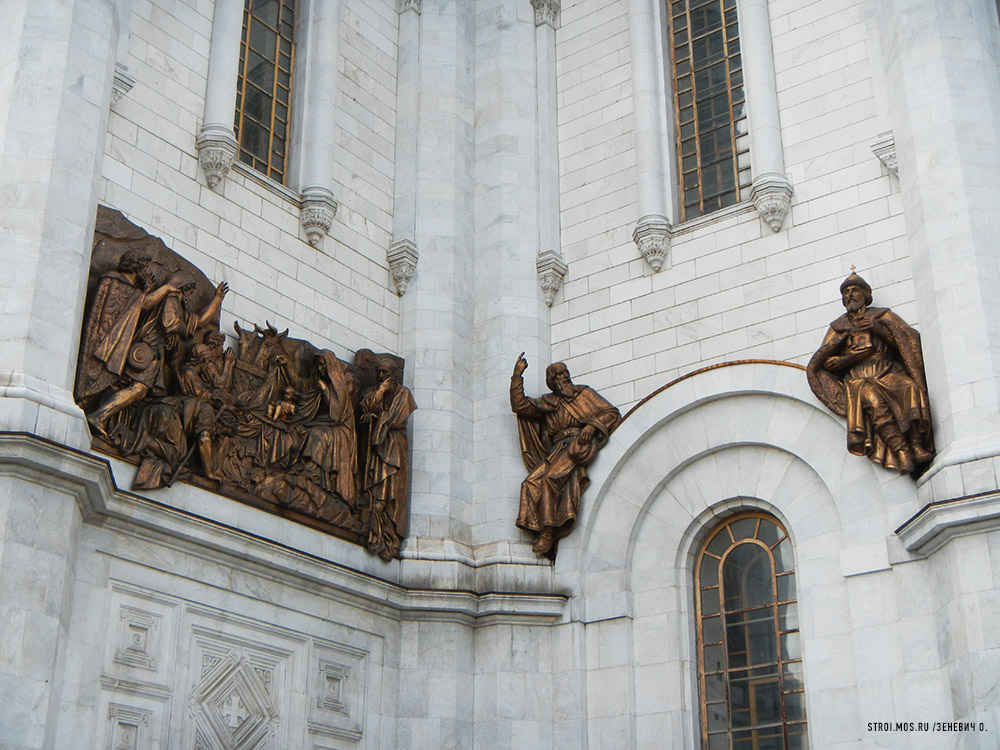
Sources: engineer-history.ru; masterok.livejournal.com; kudago.com